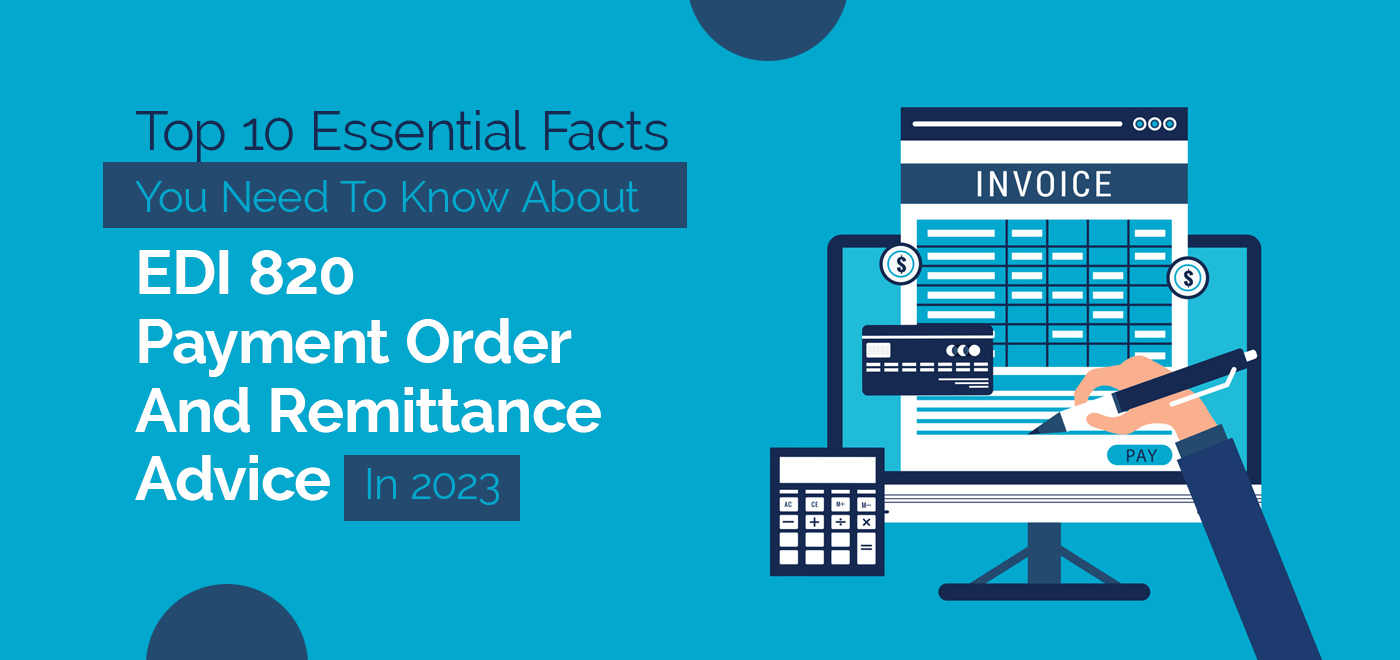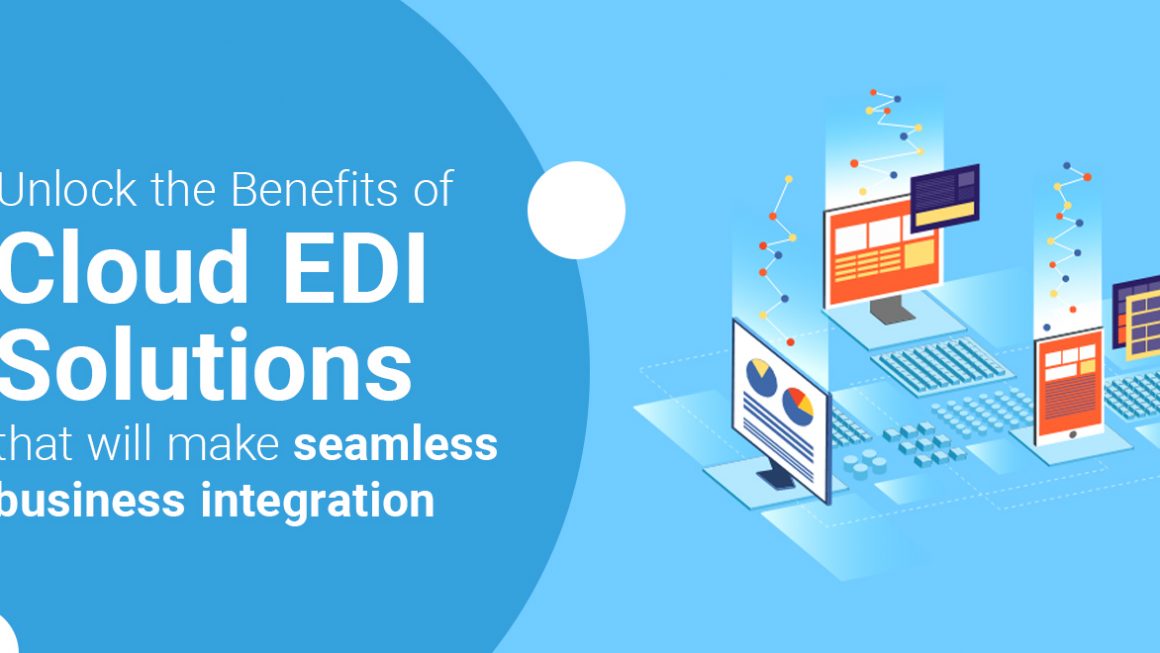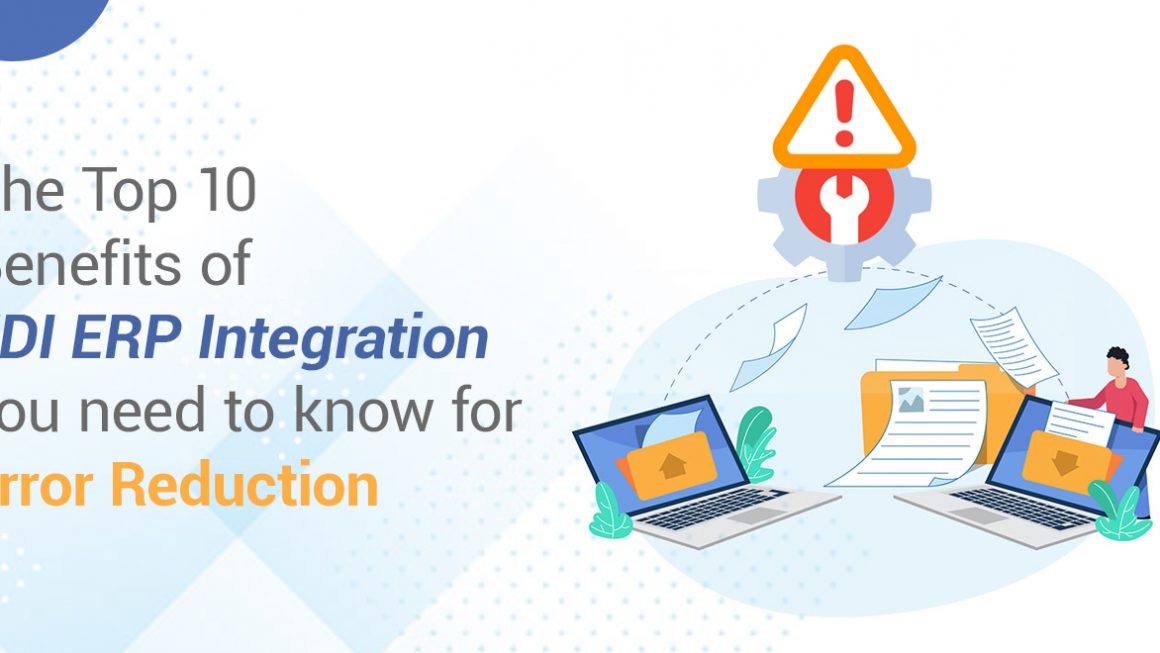Introduction
One crucial part of modern business transactions is the Electronic Data Interchange (EDI), which changes how financial information is sent between trade partners. Out of all the EDI operations. The EDI 820 stands out as the most important one for Payment Orders and Remittance Advice. Not only does this standard digital format speed up financial processes, but it also makes sure that important payment information is sent correctly, clearly, and safely. Let’s have a detailed discussion and learn more about EDI 820 and how it has changed how business is done today. So, let’s discuss it in detail in this blog post.
What is EDI 820?
EDI 820, or Electronic Data Interchange 820, is a standardized format. It is used for the electronic exchange of Payment Orders and Remittance Advice documents between trading partners. In simpler terms, it’s a digital language that facilitates the communication of payment details and associated information in a structured manner.
Let’s consider a scenario involving a manufacturer (Supplier) and a retail chain (Retailer). The Retailer needs to pay the Supplier for a recent bulk order of merchandise. They take the help of EDI service providers in USA and use their EDI consulting services and do the following.
Initiating the EDI 820 Transaction:
The Retailer initiates the EDI 820 transaction with the help of electronic data interchange software. Creating a digital document that includes the payment order specifying the amount to be paid, the payment date, and any specific instructions. Simultaneously, the Remittance Advice section details the individual invoices for the items received, providing a clear breakdown of the payment.
Structured Information Exchange:
The information is structured in a standardized format, adhering to the ASC X12 standard. This ensures that both the Retailer and the Supplier use a common language for this electronic communication.
Secure Transmission:
The EDI 820 document is securely transmitted from the Retailer’s system to the Supplier’s system using encryption and secure data transmission protocols. This guarantees the confidentiality and integrity of the financial information.
Supplier’s System Integration:
Upon receiving the EDI 820, the Supplier’s system seamlessly integrates this electronic data into its financial and Enterprise Resource Planning (ERP) systems. This integration with the help of EDI support services eliminates the need for manual data entry. Which ultimately reduces the risk of errors.
Remittance Advice Details:
The Remittance Advice section of the EDI 820 provides the Supplier with a comprehensive view of the payment. It includes details such as the specific invoices being paid, corresponding amounts, and any deductions or adjustments.
Efficient Reconciliation:
The Supplier utilizes the rich remittance advice information to efficiently reconcile the payment. This detailed breakdown ensures the payment aligns with the delivered goods and services, minimizing discrepancies.
Automation for Accuracy:
Automation plays a crucial role in the entire EDI integration process. It is a very important part of the EDI support services, which reduces manual interventions. Automated systems ensure accuracy in processing the payment order and associated remittance advice, expediting the overall financial transaction.
Transactions and Standards for EDI
Electrical data exchange integration, or EDI integration, is what it stands for. The ANSI X12 standard is used by EDI 820 papers. It was made by the American National Standards Institute (ANSI). In the United States, all EDI forms are controlled by this non-profit group. The EDI standard used around the world is EDIFACT, which stands for Electronic Data Interchange For Administration, Commerce, and Transport. This is used by businesses that want to do business around the world.
With the X12 820 transaction set, you can send information about payments in a certain way. You use the EDI 820 payment request along with the transfer of funds to pay for things like goods, services, or other deals. The payment order/remittance advice is usually sent in reaction to a bill or order, and it’s used to confirm the details of the payment. It can also be used to let the seller know about any changes to the amount being paid.
The Most Important Parts of an EDI 820
A wire transfer of money is sent along with EDI papers that have payment and order details such as
- Number of the bill or buy order
- Identifying the payer or payee
- Name of the business
- Postal Address
- Number of the payee
- Accounts of payees
- Amounts charged or paid
- Number of the bank account
- Changes to invoices
- More about taxes
- Information on how to track payments
- Date and time reference (DTM)
- Unique identifiers will always be in the data that comes in with an EDI 820 to speed up the process and make sure that the cash is used correctly.
Is an EDI 820 the same thing as a remittance advice?
Most of the time, “remittance advice” comes after “EDI 820.” What does one have to do with the other? As a whole, remittance advice is an EDI record that is part of an EDI 820 transaction. A payment order, transfer advice, and EDI 820 are all terms that are often used to refer to the same thing. A remittance tip is a piece of paper that goes with a payment. It’s normally sent by a buyer to a seller to let them know that they’ve been paid and to give more information about the debit.in the most of the time, it has information like:
- How much to pay
- Number of the invoice
- When the payment is due
- Way to pay
- Any other important information
NOTE: To answer your question, what is an invoice, and is it the same thing as payment advice? It’s not.
Remittance advice is an important way for the payer and the payee to talk to each other. It can be sent in letter, email, or computer document format. This document makes sure that the right account gets paid and that any outstanding amounts are settled. In fields like healthcare, banking, and government, remittance advice along with EDI-managed services is used a lot.
How do I send and receive an EDI 820?
An EDI 820 is pretty simple to send and receive. A Value Added Network (VAN) or the Internet is used for the transfer. Use an AS2 or a private FTP to save money. This gets rid of the need for a pricey VAN. The info in files is always encrypted to keep it safe.
What does the EDI 820 Mean?
When you get an EDI 820, you need to change it into a code that your system can understand. Most businesses have their own set of rules for how to define EDI 820s. After translating the order information, we instantly sync and map it, eliminating the need for manual data entry. Once all the info is in the system, we can process the order.
The EDI 820: How Do I Use It?
The EDI 820 papers show that you plan to pay. The matching process starts when the buyer sends the remittance advice transaction set (RMR) to the accounts payable department. To close the open account, there should be a copy of the EDI 810 statement or purchase order.
The seller confirms the payment information every time EDI is integrated by receiving money. However, the seller can also use an EDI 820 document to inform the buyer about significant changes to the statement that might impact the payment amount. An organization sends an EDI 820 to instruct the associated banking institution on how to process the payment, which may also include details about previous payments made for the same bill.
When we receive an EDI 810 invoice, we send an EDI 820. However, buyers can choose to send the document whenever they receive an invoice in any format. When the seller receives payment, the seller’s bank may also send them an EDI 820. The seller’s EDI system will make an EDI 997 Functional acknowledgment as soon as it gets the EDI 820. We send this paper back to the buyer to ensure they received it. Once and for all, the order process is over.
What are the Pros of EDI 820?
When a business handles tasks electronically, it reduces manual work and enhances the efficiency of processes. An EDI 820 frees up resources and cuts down on mistakes made by people. When translated, the EDI 820 contains the same information as a typical paper remittance advice. One thing that makes EDI safer is that the buyer, seller, and payment details are all encrypted. It is better than old ways of doing things like mail, fax, or PDF.
Automating the B2B payment process can simplify it for both buyers and sellers, and you can access the Best EDI Solutions. As a buyer, you save on a paper record. For sellers, automation lets a company keep an eye on accounts by looking for exceptions. This means that accounting doesn’t have to keep an eye on all open accounts all the time; they only have to deal with them when they are notified of a problem. For each order, they don’t have to re-enter data or send out functional acknowledgments by hand.
Top 10 Essential Facts You Need to Know about EDI 820 Payment Order and Remittance Advice
Transaction Code Purpose:
The EDI 820 transaction code serves as a pivotal component in the realm of electronic data interchange. Particularly designed to facilitate Payment Orders and Remittance Advice. It acts as a standardized electronic language, allowing businesses to articulate and understand payment information uniformly. This transition from traditional, paper-based methods to an electronic format enhances the efficiency and reliability of financial transactions.
ASC X12 Standard Compliance:
Compliance with the Accredited Standards Committee (ASC) X12 standard is paramount for EDI 820 transactions. This standardization provides a common ground for different systems and trading partners to communicate effectively. By adhering to the ASC X12 standard, businesses ensure a consistent and structured approach to the exchange of electronic data. Eliminating the risk of misinterpretation and errors in financial transactions.
Structured Data Elements:
EDI 820 employs a structured approach to data organization. Utilizing specific elements to convey payment details and remittance advice. Think of it as a standardized vocabulary for electronic communication. Where each element carries a distinct meaning. This structured format significantly reduces ambiguity and enhances precision in transmitting financial information between trading partners.
Integration with Financial Systems:
Seamless integration with financial and Enterprise Resource Planning (ERP) systems is a hallmark of EDI 820. This integration goes beyond mere compatibility. It represents a fusion of electronic data interchange with an organization’s core financial processes. The automatic incorporation of payment orders into financial systems not only ensures accuracy. But also streamlines the entire financial workflow, eliminating the need for manual intervention.
Rich Remittance Information:
One of the distinguishing features of EDI 820 is its provision of comprehensive remittance advice. This goes beyond a mere acknowledgment of payment receipt. It includes a detailed breakdown of each payment. Information such as invoice details, payment amounts, and other relevant data is embedded. Providing a holistic and detailed view of the financial transaction for both the payer and the payee.
Automation for Efficiency:
Automation stands as a driving force behind the efficiency of EDI 820 transactions. By automating the exchange of payment information, businesses reduce dependency on manual processes. This not only minimizes errors but also accelerates the overall processing of financial transactions. Automation acts as a catalyst for operational efficiency, freeing up resources for more strategic and value-added activities.
Secure Data Transmission:
In EDI 820 transactions, we prioritize security and incorporate robust measures to ensure the confidentiality and integrity of sensitive financial information. To protect the data during its electronic transfer, we employ encryption and secure data transmission protocols. This commitment to security aligns with industry standards and regulatory requirements, Instilling trust in the secure exchange of financial data.
Audit Trail Capability:
EDI 820 maintains an electronic audit trail, akin to a digital logbook meticulously recording the history of payment orders and remittance advice. This electronic trail serves multiple purposes. It acts as a compliance tool, supports internal audits, and provides a historical reference for financial transactions. The audit trail offers transparency and traceability throughout the lifecycle of each transaction.
Trading Partner Agreements:
The success of EDI 820 transactions hinges on well-defined trading partner agreements. These agreements go beyond mere technical specifications. they outline the agreed-upon EDI standards, data formats, and communication protocols. Clear and concise agreements foster a harmonious exchange of financial data. Reducing the risk of misunderstandings and discrepancies in interpreting transmitted information.
Evolution and Version Control:
Acknowledging the dynamic nature of technology, EDI standards, including EDI 820, undergo evolution. Staying informed about the latest versions and changes within the ASC X12 standard. It is a proactive approach that ensures organizations are using the most up-to-date and compatible version. This foresight is crucial for continued effectiveness in electronic data interchange. Aligning with the evolving needs of the digital landscape.
Conclusion
EDI 820 isn’t just a transaction code in the ever-changing world of electronic data exchange. It’s also a way to make financial transactions faster, more accurate, and more open. It is a structured language that helps businesses deal with the challenges of doing business in the digital age. It makes it possible for companies to work together to do business and streamline processes. Its effects go beyond simple transactions; it has created a new era where financial data moves quickly, safely, and with unmatched accuracy. With EDI 820 taking the lead, we’re shaping the future of digital finance, where automated and streamlined business interactions pave the way for greater success
FAQs
What is the primary purpose of EDI 820?
It serves as a standardized language for the electronic exchange of Payment Orders and Remittance Advice documents. Its primary purpose is to streamline and enhance the efficiency of financial transactions between trading partners.
How does EDI 820 contribute to data accuracy?
EDI 820 contributes to data accuracy by structuring payment information in a standardized format. This structured approach reduces the likelihood of errors and ensures a clear and consistent understanding of financial data between business entities.
What role does automation play in EDI 820 transactions?
Automation is integral to EDI 820 transactions. It reduces manual interventions in the exchange of payment information, minimizing errors and expediting the overall processing of financial transactions. Automation enhances operational efficiency and frees up resources for strategic activities.
How does EDI 820 ensure secure data transmission?
EDI 820 ensures secure data transmission by incorporating measures such as encryption and secure data transmission protocols. These security measures safeguard sensitive financial information during its electronic exchange, aligning with industry standards and regulatory requirements.
What benefits does EDI 820 offer to businesses in terms of reconciliation?
EDI 820 provides rich remittance advice, offering a detailed breakdown of each payment. This comprehensive information empowers businesses to reconcile payments efficiently, ensuring that the payment aligns accurately with the delivered goods and services, thereby minimizing discrepancies.



